|
In Search of Inspiration - The Art of James
Tan |
|
How To Paint Birds by James Tan |
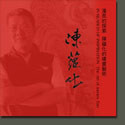 |
|
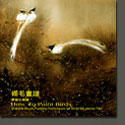 |
|
James Tan graduated from the Singapore Academy
of Art in 1972 and continued his studies with Chinese brush
painting masters in Singapore, Taiwan and San Francisco until 1980
establishing himself as a master of the traditional and Lingnan
schools of Chinese brush painting with his own distinctive style.
He has taught and lectured extensively world-wide, including The
National Museum Art Gallery (Singapore), The Victoria and Albert
Museum in London.
|
Birds in nature because of the geographical, climatic and living
habits are different, wide range of varying sizes and various
shapes. Chinese paintings of birds, reproduction of birds natural
properties, such as the peacocks ,Golden pheasants and Mandarin
Duck show their magnificent wings and eagles and cranes show their
varied dynamics. On the expression of the intention of the
painter, reflect the painter’s aesthetic conception and aesthetic
intent .....
|
| |
|
|
|
|
 Liu Kang 1911 - 2004
Liu Kang 1911 - 2004 |
|
 Chen
WenHsi 1906 - 1991 Chen
WenHsi 1906 - 1991 |
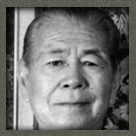 |
|
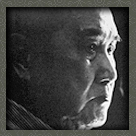 |
|
He was born in
Fujian Province and he spent his early years in Malaysia, studied
art in Shanghai and Paris, and taught art in Shanghai during the
1930s. Under the influence of Chinese artist and art teacher Liu
Haisu (1896–1994), Liu admired, and often appropriated the styles
of French-based modernist painters such as Cézanne, van Gogh and
Matisse. Liu Kang came to Singapore in 1942 and had been

|
He was born in Baigong in Guangdong province, and had his early
education at Chen Li Primary School and St. Joseph Middle School.
After graduation from secondary school, Chen Wen Hsi decided to
study full-time in fine art at the Shanghai College of Art in
1928, despite his uncle's objection. Unhappy with the college,
Chen transferred to the Xinhua College of Art in Shanghai,

|
| |
|
|
|
|
 Cheong SooPieng 1919 - 1983
Cheong SooPieng 1919 - 1983 |
|
 Lee ManFong 1913 - 1988
Lee ManFong 1913 - 1988 |
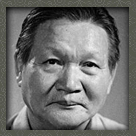 |
|
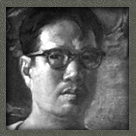 |
|
Cheong was born the youngest of seven children in Amoy, China. His
parents were neutral to his choice of education, when Cheong took
to studying art at in the Xiamen Academy of Fine Art in 1933. In
1936 Cheong graduated and attended Xinhua Academy of Fine Art in
Shanghai for further studies, only to have his education cut short
with the breakout of the Sino-Japanese War and the school
destroyed by Japanese invaders in 1938.
 |
(b. 1913, Guangdong, China–d. 1988, Jakarta, Indonesia) was a
prominent artist based in Indonesia and Singapore. Primarily
working with oil paintings, Lee was associated with the Nanyang
style, which blends Chinese techniques and subjects with Western
composition styles and mediums.
 |
| |
|
|
|
|
|
Ju Chao |
|
Ju Lian |
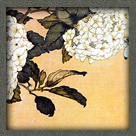 |
|
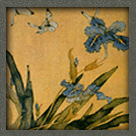 |
|
The
painter in the Qing Dynasty, a native of Panyu,GuangDong
province,the brother of Ju Lian.His style name was Mei Sheng and
his sobriquet was Mei Chao.He was talented in painting flowers and
insects. |
Ju Lian, alias Guquan, was a native Panyu. He was a
bird-and-flower painter emphasized on observation and sketching of
objects in nature. Ju specialized in the application of the
innovative technique of "zhuangshui"
 |
| |
|
|
|
|
|
Gao Jian-Fu |
|
Chen
Shu-Ren |
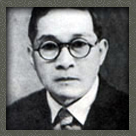 |
|
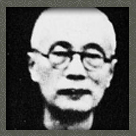 |
|
Gao Jianfu began studying with a prominent local artist, Ju Lian,
in Keshan, Guangdong at the age of fourteen. He learned under his
master's tutelage to paint flowers, plants, and ..... 
|
Chen Shu-Ren, whose original name was Shao, alias
Nianhua-weixiaozi, Dean-laoren and Ershan-shanqiao, was born at
Mingjing Village of Panyu District in the Guangdong Province. At
the

|
| |
|
|
|
|
|
Qi Bai-shi 1863-1957 |
|
huang binhong 1864-1955 |
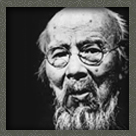 |
|
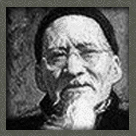 |
|
Since 1918 he resided in Beijing ( 北 京) and lived by his painting
and calligraphy. Most of the subjects he painted were flowers,
birds, insects and fish. In 1928 he began to sign his name on the
paintings as 白石 ( Bai-shi means literally "White Stone," which
implies "Snow Mountains"). He said, at one time, "I learned
finger-painting in my youth; landscape painting after 30; and
specialized in flowers, insects and birds after 40." After that

|
Huang Binhong was born in Zhejiang Province, the
grandson of the well regarded artist Huang Fengliu. Huang studied
painting and then spent many years editing literary and art
journals in Shanghai. Huang Binhong taught painting at fine arts
colleges in Shanghai and Beijng until he moved to Hangzhou in 1948
where he taught at the West Lake Art College.
|
| |
|
|
|
|
|
|
Gao Qifeng |
|
Seiho TAKEUCHI |
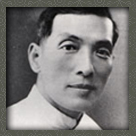 |
|
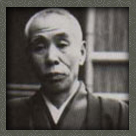 |
|
Gao Jianfu younger brother, Qifeng, accompanied him to Japan,
where the younger man studied the art of Japanese realism, or
Nihonga. This painting, with its combination of Western naturalism
and Japanese decorative style, is a superb .......
|
When speaking of modern Japanese-style painting, the names Taikan
YOKOYAMA and Seiho TAKEUCHI always arise. These two painters
introduced European painting styles into traditional Japanese
painting and harmonized them. .........
|
| |
|
|
|
|
|
Pan Yu-Liang 1895-1977 |
|
Zhang Daqian 1899-1983 |
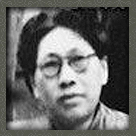 |
|
 |
|
Pan Yuliang's complicated life gets more plentiful after her
participation in art, with her defying and fending characteristics
and through movies and teleplays, the world could rediscover her
talent and her art. In 2006 spring, her solo exhibition "Pan
Yuliang - the painting soul" was held in National Museum of
History and National Taiwan Museum of Fine Arts, through 120
paintings, her life and her art were clearly displayed, and the
Pan Yu-liang fever is on the rise.

|
Zhang Daqian, original name Zhang Yuan (張爰) and pseudonym Daqian,
was one of the best-known and most prodigious Chinese artists of
the twentieth century. He is also regarded by many art experts as
one of the most gifted master forgers of the twentieth century. He
excelled at all types of paintings, and is especially famous for
his landscape, as well as lotus paintings.

|
| |
|
|
|
|
|
Long Chin-San 1892-1995 |
|
Liu Kui-Ling 1885-1968 |
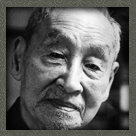 |
|
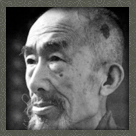 |
|
Mr. Chin-San Long, he was born Zhejiang Province in 1892 and
passed away in 1995 at the age of 104. He devoted himself in the
art of photography for more than 90 years. He made a profound
commitment to the art of photography and lived almost every single
minute with camera in hand. Followed with his teacher Gin-Lan
Lee, who was specialized in photography, during his youth, Long
began to find interest in photograph.........

|
Liu Kuiling was born in the suburbs of Tianjin. His proximity to
the countryside enabled him to observe animals and insects
closely. He specialized in painting animals. His flowers and rocks
were done in the boneless method without outlines. He was skillful
with meticulous details. .....
|
| |
|
|
|
|
|
Ven.
Hiu Wan |
|
Japanese
Connection |
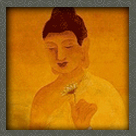 |
|
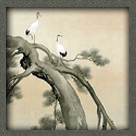 |
|
Ven.
Hiu Wan was awarded the Cultural Prize in 1997 by the Executive
Yuan, the nation's highest honor for personal achievement.
Aside from being a
distinguished artist, she is a also renowned for her scholarship
in Buddhism,

|
Although the Lingnan School stresses renewal and creativity, its
essential spirit does not reside in rejection of traditional
methods and inspiration. Rather, we consider ourselves heirs of
tradition and we strive, clearly, toward

|
| |
|
|
|
|
|
Chao
Shao-Ang |
|
Guan Shan
Yue |
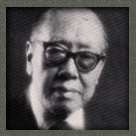 |
|
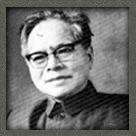 |
|
Chao Shao-Ang is a native of Guangzhou, Guangdong. He founded the
Lingnan Art Studio in Guangzhou. In 1937 he served as the head of
the Department of Chinese Painting at the Guangzhou Municipal
College of ..........
|
Guan Shanyue (1912, Yangjiang, Guangdong Province) graduated from
Guangzhou Municipal Teachers Training College in 1933. His early
work consisted of sketches made in Southwestern and
..................
|
| |
|
|
|
|
|
Crossing
Boundaries |
|
Lingnan School
of Painting |
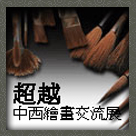 |
|
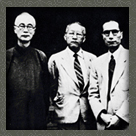 |
|
The “Crossing Boundaries
2010” Invitation Exhibition will be presented by Chinese Cultural
Centre of Greater Vancouver, in association with the Federation of
Canadian Artists and the Chinese Canadian Artists .......
|
So spectacularly successful had been Japan's modernization in the
Meiji period that the Japanese were convinced that they had found
the solution to the problem of how to adapt Western culture to
East Asia, and t .......
|
| |
|
|
|
|
|
Au Ho-Nien |
|
Yangshan
Shen |
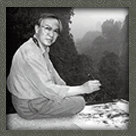 |
|
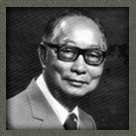 |
|
A painter with the bearing of a master, one can almost hear
birdsong sounding through the mountains/ As he rises aloft to the
Milky Way, he looks back on the innumerable peaks below . . .
(Chao Shao-Ang)Thirty years ago Au Ho-nine master Chao
Shao-Ang,.........
|
Yang Shan-hen is one of the most representative artists of the
second generation of the Lingnan School of Painting. Specialized
in bird and flower, figure, landscape painting and excelled in
calligraphy, he is open-minded to adopt the s...................
|
| |
|
|
|
|
|
James Tan |
|
Henry Wo |
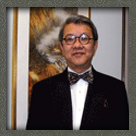 |
|
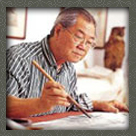 |
|
In his years of study with established masters of the Lingnan
school and more than fifteen more years of teaching other aspiring
artists, James Tan has now emerged as a leader of the next
generation of Lingnan brush .........
|
A subtle fusing of influences drawn from the East and the West
softly permeates Wo paintings. He combines his strong heritage of
Chinese brushwork and principles with his free translucent washes,
punctuated with delicate linear accents.................
|
| |
|
|
|
|
|
|